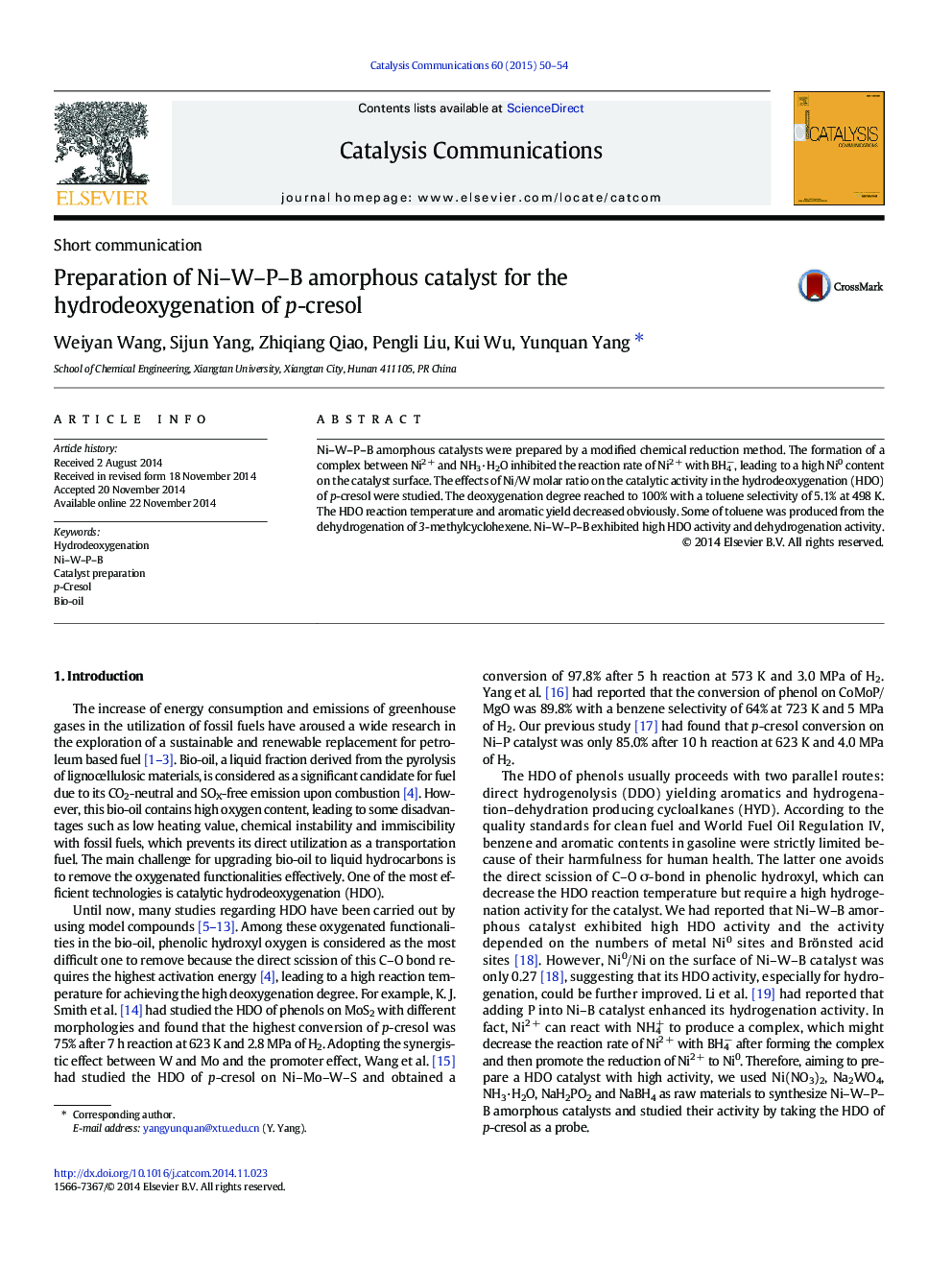| Article ID | Journal | Published Year | Pages | File Type |
|---|---|---|---|---|
| 49467 | Catalysis Communications | 2015 | 5 Pages |
•Ni–W–P–B amorphous catalysts were prepared by a modified chemical reduction method.•Ni–W–P–B exhibited high catalytic activity in the HDO of p-cresol.•The deoxygenation degree reached to 100% with a toluene selectivity of 5.1% at 498 K.•Both the HDO reaction temperature and aromatic yield decreased obviously.•Ni–W–P–B also displayed dehydrogenation activity.
Ni–W–P–B amorphous catalysts were prepared by a modified chemical reduction method. The formation of a complex between Ni2 + and NH3·H2O inhibited the reaction rate of Ni2 + with BH4−, leading to a high Ni0 content on the catalyst surface. The effects of Ni/W molar ratio on the catalytic activity in the hydrodeoxygenation (HDO) of p-cresol were studied. The deoxygenation degree reached to 100% with a toluene selectivity of 5.1% at 498 K. The HDO reaction temperature and aromatic yield decreased obviously. Some of toluene was produced from the dehydrogenation of 3-methylcyclohexene. Ni–W–P–B exhibited high HDO activity and dehydrogenation activity.
Graphical abstractNi–W–P–B amorphous catalysts were prepared by a modified chemical reduction method and exhibited high catalytic activity in the HDO of p-cresol. The deoxygenation degree reached to 100% with a toluene selectivity of only 5.1% at 498 K. Both the HDO reaction temperature and aromatic yield decreased obviously. These catalysts also displayed dehydrogenation activity.Figure optionsDownload full-size imageDownload as PowerPoint slide
